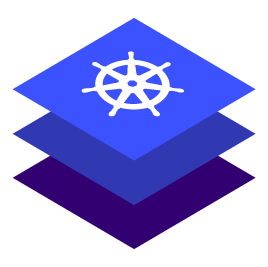Azure Quick Start
Get started by installing a cluster with default configuration settings on Azure
This Quick Start guide provides simplified instructions for using DKP to get your Kubernetes cluster up and running with minimal configuration requirements on an Azure public cloud instance. To customize your Azure installation, refer to Azure Advanced installation.
Prerequisites
Before starting the DKP installation, verify that you have:
An x86_64-based Linux or macOS machine with a supported version of the operating system.
The
dkpbinary on this machine.Docker version 18.09.2 or later.
kubectl for interacting with the running cluster.
A valid Azure account with credentials configured.
Configure Azure Prerequisites
Follow these steps:
Log in to Azure:
CODEaz loginCODE[ { "cloudName": "AzureCloud", "homeTenantId": "a1234567-b132-1234-1a11-1234a5678b90", "id": "b1234567-abcd-11a1-a0a0-1234a5678b90", "isDefault": true, "managedByTenants": [], "name": "Mesosphere Developer Subscription", "state": "Enabled", "tenantId": "a1234567-b132-1234-1a11-1234a5678b90", "user": { "name": "user@azuremesosphere.onmicrosoft.com", "type": "user" } } ]
2. Create an Azure Service Principal (SP) by running the following command:
Note: If you have more than one Azure account, run this command to ensure you are pointing to the correct Azure subscription ID: $(az account show --query id -o tsv)
If an SP with the name exists, this command will rotate the password.
az ad sp create-for-rbac --role contributor --name "$(whoami)-konvoy" --scopes=/subscriptions/$(az account show --query id -o tsv){
"appId": "7654321a-1a23-567b-b789-0987b6543a21",
"displayName": "azure-cli-2021-03-09-23-17-06",
"password": "Z79yVstq_E.R0R7RUUck718vEHSuyhAB0C",
"tenant": "a1234567-b132-1234-1a11-1234a5678b90"
}3. Set the required environment variables:
export AZURE_SUBSCRIPTION_ID="<id>" # b1234567-abcd-11a1-a0a0-1234a5678b90
export AZURE_TENANT_ID="<tenant>" # a1234567-b132-1234-1a11-1234a5678b90
export AZURE_CLIENT_ID="<appId>" # 7654321a-1a23-567b-b789-0987b6543a21
export AZURE_CLIENT_SECRET="<password>" # Z79yVstq_E.R0R7RUUck718vEHSuyhAB0C4. Base64 encode the same environment variables:
export AZURE_SUBSCRIPTION_ID_B64="$(echo -n "${AZURE_SUBSCRIPTION_ID}" | base64 | tr -d '\n')"
export AZURE_TENANT_ID_B64="$(echo -n "${AZURE_TENANT_ID}" | base64 | tr -d '\n')"
export AZURE_CLIENT_ID_B64="$(echo -n "${AZURE_CLIENT_ID}" | base64 | tr -d '\n')"
export AZURE_CLIENT_SECRET_B64="$(echo -n "${AZURE_CLIENT_SECRET}" | base64 | tr -d '\n')"Create a new Azure Kubernetes cluster
If you use these instructions to create a cluster on Azure using the DKP default settings without any edits to configuration files or additional flags, your cluster will be deployed on an Ubuntu 20.04 operating system image with 3 control plane nodes, and 4 worker nodes.
NOTE: The default Azure image is not recommended for use in production. We suggest using Konvoy Image Builder to create a custom image to take advantage of enhanced cluster operations, and to explore the advanced Azure installation topics for more options.
Give your cluster a name suitable for your environment:
CODEexport CLUSTER_NAME=azure-exampleCreate a Kubernetes cluster:
NOTE: To increase Docker Hub's rate limit use your Docker Hub credentials when creating the cluster, by setting the following flag --registry-mirror-url=https://registry-1.docker.io --registry-mirror-username=<username> --registry-mirror-password=<password> on the dkp create cluster command.
dkp create cluster azure \
--cluster-name=${CLUSTER_NAME} \
--additional-tags=owner=$(whoami) \
--self-managedYou will see output similar to the following:
Generating cluster resources
cluster.cluster.x-k8s.io/azure-example created
azurecluster.infrastructure.cluster.x-k8s.io/azure-example created
kubeadmcontrolplane.controlplane.cluster.x-k8s.io/azure-example-control-plane created
azuremachinetemplate.infrastructure.cluster.x-k8s.io/azure-example-control-plane created
secret/azure-example-etcd-encryption-config created
machinedeployment.cluster.x-k8s.io/azure-example-md-0 created
azuremachinetemplate.infrastructure.cluster.x-k8s.io/azure-example-md-0 created
kubeadmconfigtemplate.bootstrap.cluster.x-k8s.io/azure-example-md-0 created
clusterresourceset.addons.cluster.x-k8s.io/calico-cni-installation-azure-example created
configmap/calico-cni-installation-azure-example created
configmap/tigera-operator-azure-example created
clusterresourceset.addons.cluster.x-k8s.io/azure-disk-csi-azure-example created
configmap/azure-disk-csi-azure-example created
clusterresourceset.addons.cluster.x-k8s.io/cluster-autoscaler-azure-example created
configmap/cluster-autoscaler-azure-example created
clusterresourceset.addons.cluster.x-k8s.io/node-feature-discovery-azure-example created
configmap/node-feature-discovery-azure-example created
clusterresourceset.addons.cluster.x-k8s.io/nvidia-feature-discovery-azure-example created
configmap/nvidia-feature-discovery-azure-example createdAs part of the underlying processing, the DKP CLI:
creates a bootstrap cluster
creates a workload cluster
moves CAPI controllers from the bootstrap cluster to the workload cluster, making it self-managed
deletes the bootstrap cluster
Explore the new Kubernetes cluster
The kubeconfig file is written to your local directory and you can now explore the cluster.
List the Nodes with the command:
CODEkubectl --kubeconfig=${CLUSTER_NAME}.conf get nodesYou will see output similar to:
CODENAME STATUS ROLES AGE VERSION azure-example-control-plane-84htt Ready control-plane,master 8m11s v1.22.7 azure-example-control-plane-r8srg Ready control-plane,master 4m17s v1.22.7 azure-example-control-plane-wrdql Ready control-plane,master 6m15s v1.22.7 azure-example-md-0-9crp9 Ready <none> 6m47s v1.22.7 azure-example-md-0-dvx5d Ready <none> 6m42s v1.22.7 azure-example-md-0-gc9mx Ready <none> 5m27s v1.22.7 azure-example-md-0-tkqf7 Ready <none> 4m48s v1.22.7List the Pods with the command:
CODEkubectl --kubeconfig=${CLUSTER_NAME}.conf get pods -AYou will see output similar to:
CODENAMESPACE NAME READY STATUS RESTARTS AGE calico-system calico-typha-665d976df-rf7jg 1/1 Running 0 60m capa-system capa-controller-manager-697b7df888-vhcbj 2/2 Running 0 57m capi-kubeadm-bootstrap-system capi-kubeadm-bootstrap-controller-manager-67d8fc9688-5p65s 1/1 Running 0 57m capi-kubeadm-control-plane-system capi-kubeadm-control-plane-controller-manager-846ff8b565-jqmhd 1/1 Running 0 57m capi-system capi-controller-manager-865fddc84c-9g7bb 1/1 Running 0 57m cappp-system cappp-controller-manager-7859fbbb7f-xjh6k 1/1 Running 0 56m ...
Install and Log in to the DKP UI
You can now proceed to installing the DKP UI and applications. After installation, you will be able to log in to the DKP UI to explore it.
Delete the Kubernetes Cluster and Cleanup your Environment
Follow these steps:
Delete the provisioned Kubernetes cluster and wait a few minutes:
CODEdkp delete cluster \ --cluster-name=${CLUSTER_NAME} \ --kubeconfig=${CLUSTER_NAME}.conf \ --self-managedCODE✓ Deleting Services with type LoadBalancer for Cluster default/azure-example ✓ Deleting ClusterResourceSets for Cluster default/azure-example ✓ Deleting cluster resources ✓ Waiting for cluster to be fully deleted Deleted default/azure-example cluster
